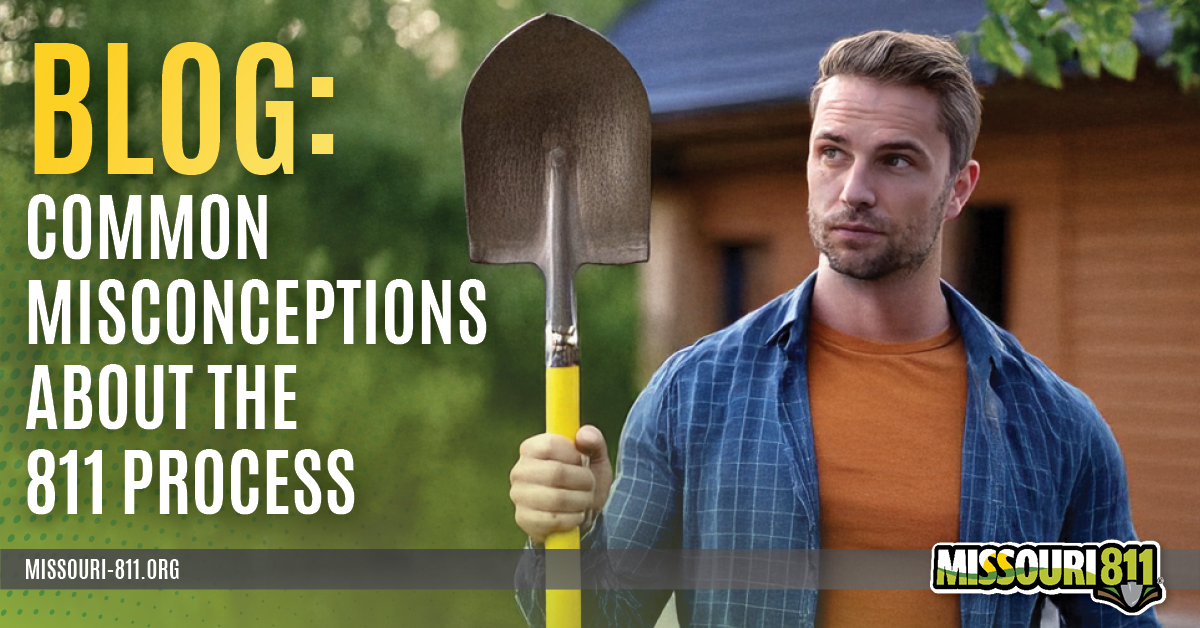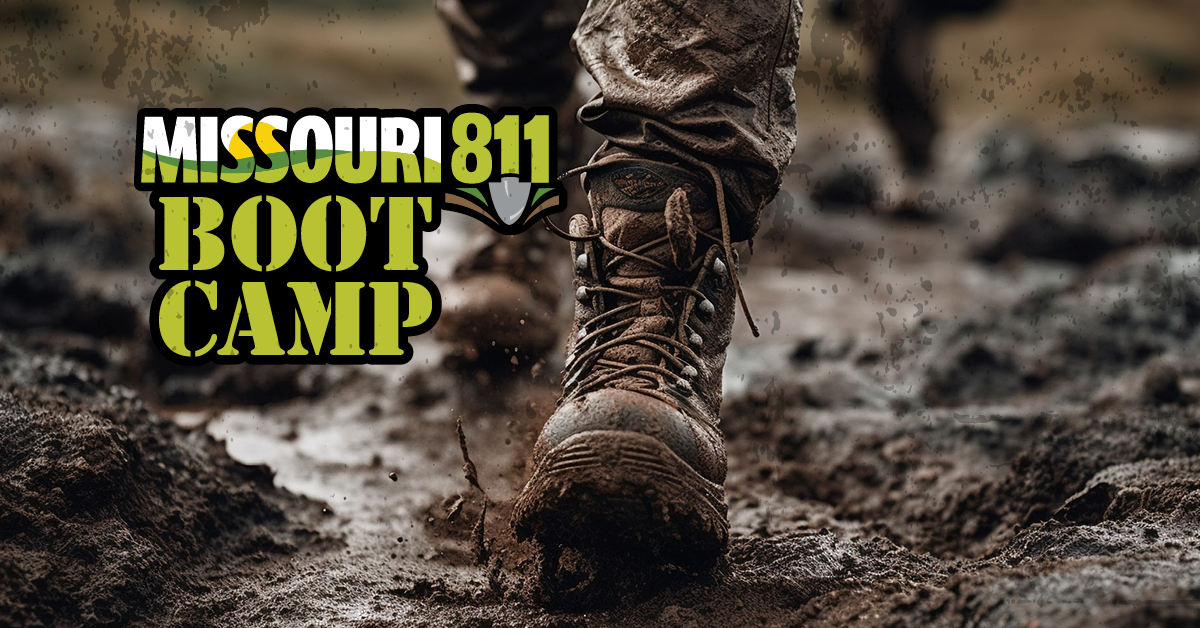Signed into law by Governor Mike Kehoe on July 14, 2025, Senate Bill 133 brings a comprehensive update to Missouri’s Underground Facility Safety and Damage Prevention Act that will take effect August 28, 2025. These changes aim to improve damage prevention, increase safety, and modernize communication between stakeholders. Below is a summary of key updates that Missouri 811 members should prepare for.
1. Expanded Definitions and New Terminology (§319.015)
Several new definitions have been added or updated to align with best practices and evolving technologies:
- New terms introduced: best practices, careful and prudent, electronic white lining, detectible underground location device, locator strip, locator wire, reasonable care, and start date of work.
What does this mean for me?
Best Practices are widely accepted methods for preventing utility damage, such as calling before you dig and digging carefully near markings. These are outlined in the Common Ground Alliance (CGA) Best Practices guide, which Missouri 811 supports. You can find it on Missouri 811’s website:
https://missouri-811.org/resources/download-library/
Keep in mind that Missouri law takes priority over the CGA guide. If the two differ, follow Missouri law. For example, the CGA defines the tolerance zone as the width of the facility plus 18 inches on either side of the outside edge of an underground utility, but Missouri law uses 24 inches, and therefore, 24 inches is enforced in Missouri. When in doubt, always follow state law.
2. Excavation Notices Now Valid for 21 Calendar Days (§319.025)
One of the most significant updates in SB 133 is the extension and clarification of the validity period for excavation notices.
Under the new law, the Ticket Life for an excavation notice submitted through the Missouri 811 notification center will now be valid for 21 consecutive calendar days from the excavator’s stated start date of work, with the notice expiring at 11:59 p.m. on the twenty-first day.
Notes:
- Ticket life is not affected by Missouri holidays or weekends, meaning, these days count toward the 21 consecutive day period.
- Locate Requests timelines have not changed. Locate Requests require three working days and are impacted by Missouri holidays and weekends, meaning these days don’t count toward the 3-day period.
What does this mean for me?
Utility Owners
You now have a clear, twenty-one-day window to track and support excavation activity. This helps with planning, resource management, and avoiding confusion about expired tickets.
Locators
With a defined expiration date, it’s easier to plan and prioritize locate work. You’ll know exactly how long markings are expected to remain valid and when to expect potential renewals.
Excavators
You have more time to finish your project without needing to submit a new ticket. Missouri 811 will send you an email fourteen days after your start date (seven days before your ticket expires) to ask if you’ll finish on time. If you need more time, Missouri 811 will provide you with simple step-by-step instructions to submit a renewal ticket.
Excavators should still monitor site markings closely and request a remark if any markings are obscured due to weather, construction activity, or other causes. If work is not finished within the 21-day window, a renewal ticket is required.

3. Detectible Location Devices Required for New Facilities (§319.019)
Starting August 28, 2025, all new underground facilities (except storm and sanitary sewer mains/laterals deeper than six feet) must include a detectible underground location device, unless they are otherwise electronically locatable.
What does this mean for me?
Utility Owners:
If you install underground facilities after August 28, 2025, you will be required to include a detectible location device—such as tracer wire or locator tape—unless the facility is already locatable using electronic methods. This means you'll need to plan for these materials and installation steps during design and construction, especially for electric, gas, telecom, water, and broadband lines. The goal is to make future locating easier and more accurate.
Locators:
This change will make your job more efficient and precise. When new facilities are properly installed with detectible devices, you’ll be able to locate them faster and with greater confidence, reducing time spent on complex locates or guesswork in difficult terrain.
Excavators:
You benefit from safer digging. As more facilities are installed with tracer wire or similar tools, you’re more likely to receive accurate markings, reducing the risk of utility strikes and jobsite delays. Over time, this helps improve job safety and reduces liability exposure.
4. Enhanced Notice and Marking Requirements (§319.026)
Electronic white lining is now recognized as an acceptable way to designate excavation areas.

What does this mean for me?
Electronic white lining is now officially part of state law, but nothing changes in practice. It has already been available for years through the Missouri 811 Internet Ticketing system and remains an easy way to mark dig areas online.
5. Clarified Design Request Rules (§319.027)
Design requests are used to gather information about underground utilities before a project begins. SB 133 updates the law to give excavators more flexibility in the planning phase while also reinforcing that a design request is not permission to begin digging.
- The previous 10-day limit for design requests has been removed.
- Information provided in response to a design request cannot be used as authorization to begin excavation. A standard locate request must still be submitted before any digging begins.
What does this mean for me?
Excavators can now submit a design request well in advance of a project, weeks or even months ahead. This gives you more time to gather facility information, plan your job, and coordinate with other crews or contractors. Just remember that a design request is for planning purposes only. You still need to submit a standard locate ticket before any digging begins.
6. Liability Clarifications (§319.034 & §319.035)
This section explains who may be held responsible when an underground utility is damaged. It reinforces that excavators, utility owners, and locators all share responsibility for safe digging and clear communication.
If a utility is damaged, and the excavator followed all requirements outlined in Sections 319.010 to 319.050 (such as submitting a locate request, waiting the required time, and digging carefully) then the excavator may not be held liable if it is proven that the Utility Owner provided incorrect information or the Locator does not provide an accurate locate.
Here are two examples of when responsibility may fall on the Utility Owner or Locator:
- A Utility Owner statuses a ticket with a “Clear/No Conflict” status, resulting in the Excavator striking an underground utility.
- A Locator marks the underground facility in the wrong place, such as outside the tolerance zone (also defined as the “approximate locate”), causing the Excavator to strike the underground facility.
Everyone involved in the 811 process plays an important role in preventing damages. Accurate information, proper marking, and clear communication are essential to the one call process.
What does this mean for me?
Utility Owners
You are responsible for accurately marking your underground facilities and actively participating in the Missouri 811 system. If lines are not marked correctly, you fail to respond to a locate request or provide incorrect information you may be held responsible for any damage that results.
Locators
This update reinforces the importance of accurate and timely marking along with providing the correct status back to Missouri 811. If a facility is not properly marked, and damage occurs, responsibility may fall on the locator, or the contractor hired by the utility owner. Attention to detail and proper documentation are more important than ever.
Excavators
If you comply with all the requirements outlined in Sections 319.010 to 319.050, such as submitting a locate request, waiting the required time, confirming positive responses, and using care while digging, you may not be held responsible if a utility is damaged due to incorrect or missing markings.
SB 133 enhances Missouri’s damage prevention framework by clarifying responsibilities, improving communication, and modernizing procedures. Missouri 811 recommends all members, whether utility owners, municipalities, excavators, or locators, review their internal processes and ensure they are ready for compliance when the law takes effect later this year.
For additional guidance or training, please contact Missouri 811.






